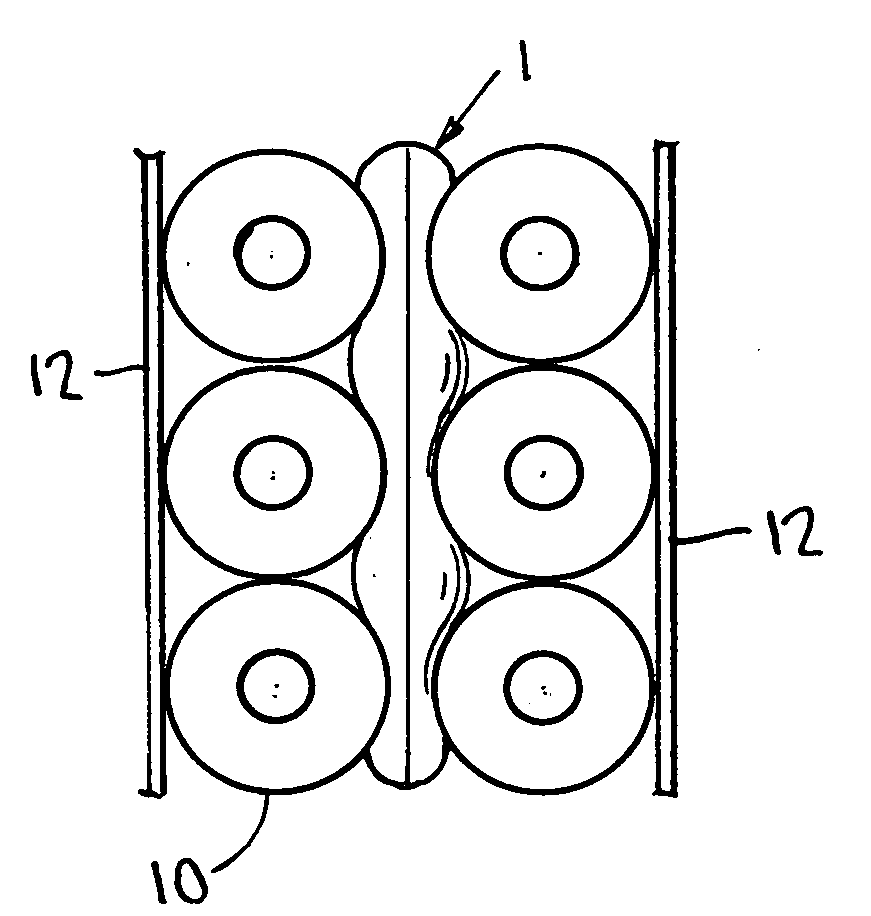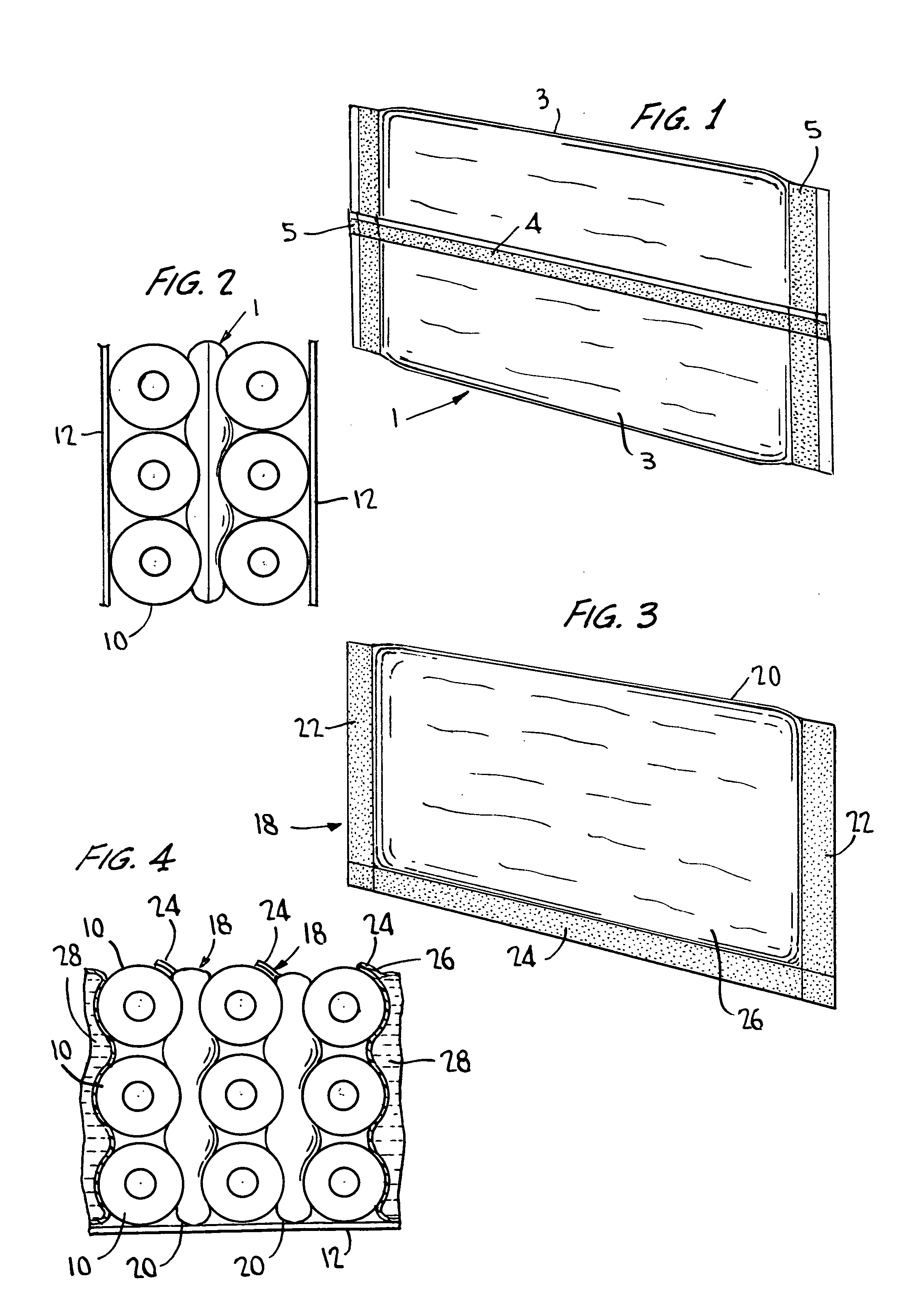Suppression of battery thermal runaway
a technology for battery packs and thermal runaway, applied in secondary cells, electrochemical generators, cell components, etc., can solve the problems of battery fire, difficult to extinguish with conventional methods, and battery fires that are well-known, and achieve low cost, reduce the probability of thermal runaway, and facilitate mass production
- Summary
- Abstract
- Description
- Claims
- Application Information
AI Technical Summary
Benefits of technology
Problems solved by technology
Method used
Image
Examples
Embodiment Construction
[0028]As summarized above, according to the invention a thermal suppression element comprises a quantity of water stored as a hydrogel in a pouch in good thermal contact with the cells of a battery pack. If one or more cells overheat, the water will be heated by direct contact with the outer surface of the cell; if the cell ruptures, the water will also be heated by absorption of the heat of the gases released by the cell. If heated sufficiently, the water will at least partially vaporize, thus absorbing an amount of heat per molecule vaporized equal to the latent heat of vaporization. Absorption of heat by the process of change of phase of a material, in this case change of phase of water from liquid to gaseous phase, can be referred to as phase change material (PCM) energy absorption.
[0029]Referring to FIG. 1, in a first preferred embodiment a thermal suppression element 1 comprising a liquid-tight pouch containing a hydrated hydrogel material is constructed by folding and heat-se...
PUM
 Login to View More
Login to View More Abstract
Description
Claims
Application Information
 Login to View More
Login to View More - R&D
- Intellectual Property
- Life Sciences
- Materials
- Tech Scout
- Unparalleled Data Quality
- Higher Quality Content
- 60% Fewer Hallucinations
Browse by: Latest US Patents, China's latest patents, Technical Efficacy Thesaurus, Application Domain, Technology Topic, Popular Technical Reports.
© 2025 PatSnap. All rights reserved.Legal|Privacy policy|Modern Slavery Act Transparency Statement|Sitemap|About US| Contact US: help@patsnap.com


